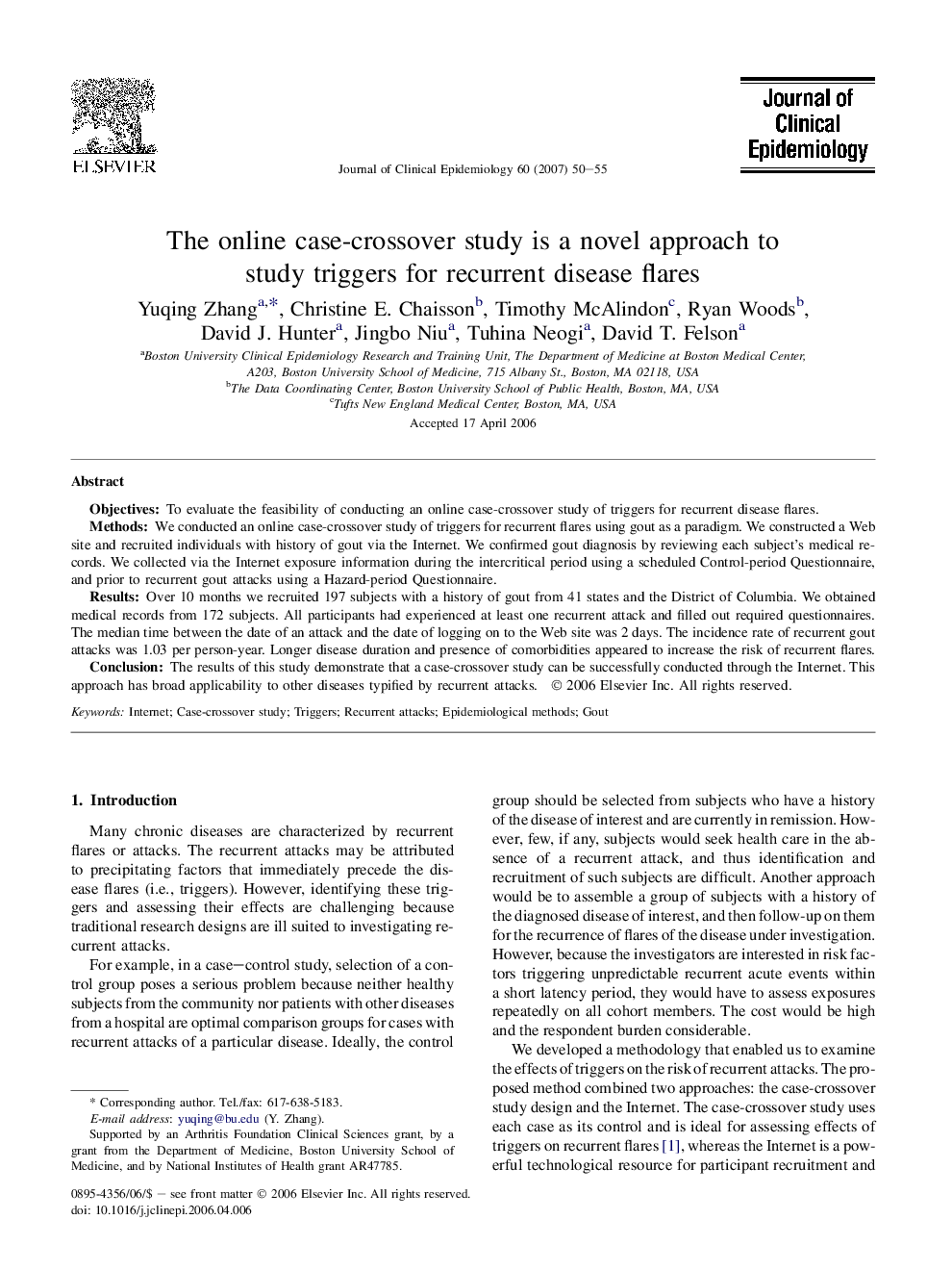| Article ID | Journal | Published Year | Pages | File Type |
|---|---|---|---|---|
| 1083545 | Journal of Clinical Epidemiology | 2007 | 6 Pages |
ObjectivesTo evaluate the feasibility of conducting an online case-crossover study of triggers for recurrent disease flares.MethodsWe conducted an online case-crossover study of triggers for recurrent flares using gout as a paradigm. We constructed a Web site and recruited individuals with history of gout via the Internet. We confirmed gout diagnosis by reviewing each subject's medical records. We collected via the Internet exposure information during the intercritical period using a scheduled Control-period Questionnaire, and prior to recurrent gout attacks using a Hazard-period Questionnaire.ResultsOver 10 months we recruited 197 subjects with a history of gout from 41 states and the District of Columbia. We obtained medical records from 172 subjects. All participants had experienced at least one recurrent attack and filled out required questionnaires. The median time between the date of an attack and the date of logging on to the Web site was 2 days. The incidence rate of recurrent gout attacks was 1.03 per person-year. Longer disease duration and presence of comorbidities appeared to increase the risk of recurrent flares.ConclusionThe results of this study demonstrate that a case-crossover study can be successfully conducted through the Internet. This approach has broad applicability to other diseases typified by recurrent attacks.
